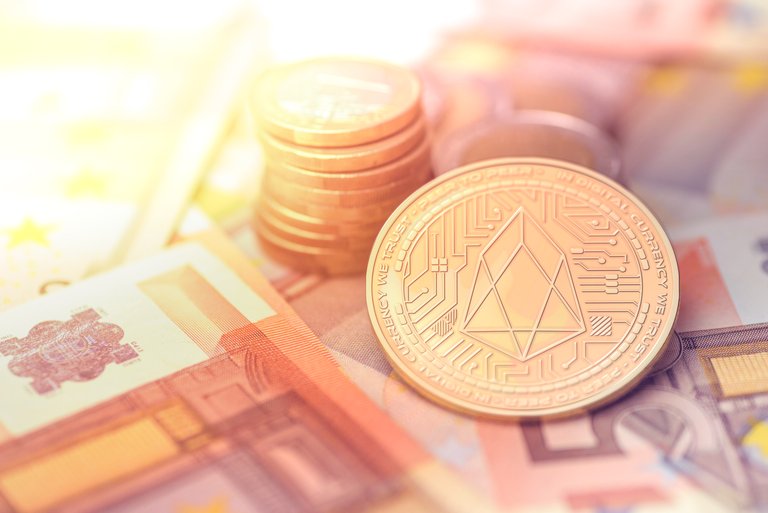
Many people have been getting into the EOS hype for the past number of months. Leading up to their June 1st date for the end of their token sales, many have been eagerly anticipating and registering their coins. Throughout the entire process, Block.One (the company behind EOS) has orchestrated one of the most successful ICOs ever.
The EOS Initial Coin Offering lasted for months, but raised $4 billion, easily dwarfing the $1.7 raised through private investors by messaging app Telegram. And throughout the fundraising process, the EOS community has been touting the incredible potential for the cryptocurrency and getting a lot of traction within the blockchain community.
But why is EOS gaining so much popularity, and market cap, in such a short amount of time? And how did they manage to raise an absorbent amount of money before they even launched a product?
Block.One Background
Block.One was like many other ICOs at the beginning of the year, turning away from the United States for more favorable jurisdictions, and is currently based in the Cayman Islands.
They saw the incredible momentum behind the blockchain movement, and how Ethereum was bringing the technology past just a financial transaction accounting system. However, they also saw the scalability issues presented by some of the original blockchain applications. So Block.One brought about the EOS platform to improve upon the disruptive blockchain applications in the crypto markets.
Block.One / EOS Team
The Chief Technology Officer (CTO) Dan Larimer is one of the blockchain developers in the world that’s completely capable of building a blockchain platform or protocol from the ground up. He’s the mastermind developer behind two successful and functioning blockchain based platforms, Steemit and Bitshares. These two blockchains already process more transactions than both Ethereum and Bitcoin.
There are notable supporters from the crypto community that are proponents of the EOS platform. Brock Pierce, a major influencer in the crypto sphere, was one of the early supporters of the EOS blockchain platform and previously served as their Chief Strategy Officer.
EOS Token Generation
The distribution of EOS tokens is one of the unique ICO processes seen to date in the cryptocurrency industry. Under the normal ICO process, the token issuing company will offer a predetermined set of tokens within the fundraising period. So they usually have strong marketing campaigns to build a community of investors and token holders that believe in the project. However, these first communities can be rather small and lead to a small number of token holders, not allowing for the fully centralized aspect.
EOS wanted to put a focus on achieving a decentralized platform, so they aimed for a wide distribution during their ICO process, which lasted for just under a year, starting in August 2017 and finally concluding on June 1st this year. Block.One got great traction right from the start, as they managed to sell 20% of the initial 1 billion tokens over the first week of their active ICO campaign.
During the ICO, an additional 2 million tokens were created every 23 hours and sold on the open market, representing 0.2% of the total initial token supply. The result was that 90% of the EOS tokens were sold during the year-long ICO process, and the platform is subsequently launched. Block.One is going to keep 10% of the tokens to remain as stakeholders along with the community of EOS token holders.
EOS tokens are ERC-20 tokens built on the Ethereum network. Token holders can store their EOS with an Exodus wallet, or through MyEtherWallet.
EOS Features
EOS intends to bring scalability and other improvements to decentralized applications, like the Ethereum network. Under this objective, they have implemented several features that have the crypto world interested and eager to use their product.
Scalability
The primary issue with so-called legacy blockchain platforms is their limitations with the number of transactions they can process. Bitcoin handles a few transactions per second, while Ethereum is a little better with 20 per second. Visa and Paypal still handle a higher transaction rate at 1667 and 193 transactions per second respectively.
Transactions are limited due to the processing technique involved, which can often involve a proof-of-work model that requires computers to solve highly complex mathematical computations. On top of that, each node on the network goes through a consensus mechanism to verify decisions and transactions on the network.
EOS is supposed to solve the scalability issues using a distributed proof of stake consensus model (DPOS). Under this framework, they are able to compute millions of transactions per second on their platform efficiently.
Flexibility
The DPOS model also allows EOS to be more resistant towards a DAO attack where the entire network suffers from one DAPP going bad. Under the DPOS, elected network nodes can pause or freeze a faulty DAPP until the issue is resolved, keeping the entire platform maintained while one part is offline. This also enables the network so that each node isn’t responsible for maintenance of the whole blockchain.
How Does DPOS Work?
This distributed proof-of-stake model is how EOS can achieve the unique features their platform provides. The mining under this method utilizes block producers who are chosen through a perpetual voting and approval system. Any node on the network can choose to participate and be given a chance to add blocks to the chain, depending on how many votes they receive compared to the rest of the network.
Blocks on the EOS chain are created in rounds of 21, so at the beginning of each round, 21 block producers are also chosen. The top 20 are automatically determined, and the last block producer is the one selected by the voting system. Producers are randomly assigned to maintain the balance of connectivity to the rest of the producers.
To make sure that there is enough network support to maintain a 3 second block time, the EOS platform punishes producers that don’t participate and removes them from consideration. Producers must produce a minimum of one block every 24 hours to remain in consideration.
This system is pretty resistant to a fork in the blockchain because producers aren’t competing for block creation, but cooperating and collaborating to maintain the chain instead. If a fork were ever to occur, the consensus would automatically switch to the longest chain.
Final Thoughts
EOS is a unique case in the cryptocurrency markets. They blazed their trail concerning their ICO and fundraising tactics. They have been pretty successful in building their presence in the crypto community over the past year and now sit at the 5th largest cryptocurrency at a valuation of $10 billion.
Now, with the platform launching, the community will be eager to get a chance to use the mainnet product and see what all the hype has been about over the past year. What will determine the platform’s success going forward will be their ability to integrate industrial scale applications on their network and to maintain the transactional scale to overcome the usability challenges of Ethereum. With the profile of the team behind EOS, it will also be interesting to see how their developer community evolves as the project becomes more mature.
This article was brought to you by Bitcoin Plinko game on MintDice. Originally posted on MintDice.com.


Is EOS also a part of the new DeFi tokens that's the craze right now?
It means we need to look out in the coming days for clues then.
While there is a lot of luck in picking the correct coins, there will always be a lot of skill too. And if you do it well then sure, you could easily make returns in the 100-1000% range I'm sure rather quickly.
Hmmm, that is equally true. I'd like to ask what you think about the recent spate of Cryptocurrency scams. I've seen some in the form of MLM saying they have built their network on some established blockchain. What do you think about this? I'm totally novice to the world of crypto.
There will always be scams because of the irreversible and anonymous nature of crypto. Both fraudulent individuals or even entire companies that will try to take your money. This is part of what makes speculative trading difficult. And the more speculative, the more risk you are exposed to. For the smart and/or lucky ones though... you can become a millionaire in literally weeks or months.
That's true, speculative trading is difficult. I wish people can take the time to get veritable knowledge of what they are investing in. Over here so many are involved in some platforms which I smell foul play. I'm thinking it might be a good thing to enlighten them about the patterns of those trying to swindle them.
I'm not sure definitively but I imagine it's something given that the ETH network is clogged up and it could be one of the many ways out if it keeps having network congestion issues.
With the new ICO craze out there known as DeFi, have you considered investing in these types of projects?